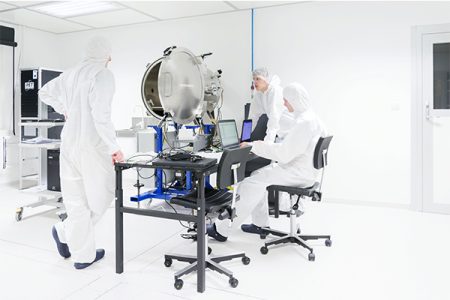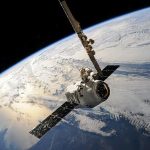The satellites AERO and VISTA will house a novel electromagnetic vector sensor antenna developed by MITs Lincoln Laboratory.
 NanoAvionics has received a contract to build two nanosatellites for the Massachusetts Institute of Technology (MIT) AERO-VISTA mission team.
NanoAvionics has received a contract to build two nanosatellites for the Massachusetts Institute of Technology (MIT) AERO-VISTA mission team.
Funded by US space agency NASAs H-TIDeS (Heliophysics Technology and Instrument Development for Science programme), the mission is led by MIT and includes several partners: MIT Haystack Observatory, MIT Lincoln Laboratory, Merrimack College, Dartmouth College, and Morehead State University. Morehead State is responsible for bus contracting and ground operations services.
The two identical spacecraft: AERO (Auroral Emissions Radio Observer) and VISTA (Vector Interferometry Space Technology with AERO) will be based on NanoAvionics standardised pre-integrated and pre-qualified 6U nanosatellite bus M6P. Both will house a novel electromagnetic vector sensor antenna developed by MITs Lincoln Laboratory.
The aim of this first in-space demonstration is to study from a low Earth orbit (LEO) unexplained features about the nature and sources of radio emission from the Earths aurora. With a targeted launch in 2022, the AERO-VISTA mission is expected to last three months.
To accomplish the AERO-VISTA mission, the vector sensor onboard the two nanosatellites will measure amplitude and phase of radio emission in the Earths aurora zone the geographic area above the Arctic Circle where the Northern Lights appear. Using a sun-synchronous polar orbit will allow sensing of radiation not visible from Earth.
In addition to their respective mission, coordinated observations by the pair will demonstrate interferometry, merging or superimposing waves to create an interference pattern from which information about the source can be extracted.
Commenting on the development, Philip Erickson, principal investigator (PI) of AERO, said: We’re delighted to have NanoAvionics join the AERO and VISTA team as our satellite provider. We have a bright future ahead and I’m excited to work with NanoAvionics on making our goals a reality. The resulting understanding of our near-Earth space environment benefits all who seek to learn about the natural world.
Frank Lind, VISTA PI, remarked: “It takes a great team of people to make that happen. NanoAvionics is now a key part of our team and we are looking forward to designing and building our satellites with them.
Benjamin K. Malphrus, professor of Space Science at Morehead State University and co-PI on the mission, added: After a long and competitive search process, the team selected NanoAvionics to provide the two satellite buses. NanoAvionics is an innovative company with a highly capable bus and was an excellent fit for this potentially significant science mission. We have been extremely impressed with the NanoAvionics team and look forward to flying their 6U bus on the AERO-VISTA mission.
F. Brent Abbott, CEO of NanoAvionics US noted: Being part of this first-of-its-kind MIT research mission and working with such an august team is very exciting and the selection of NanoAvionics as the mission integrator shows the confidence in our technology and strong performance of our nanosatellite buses.
















































































